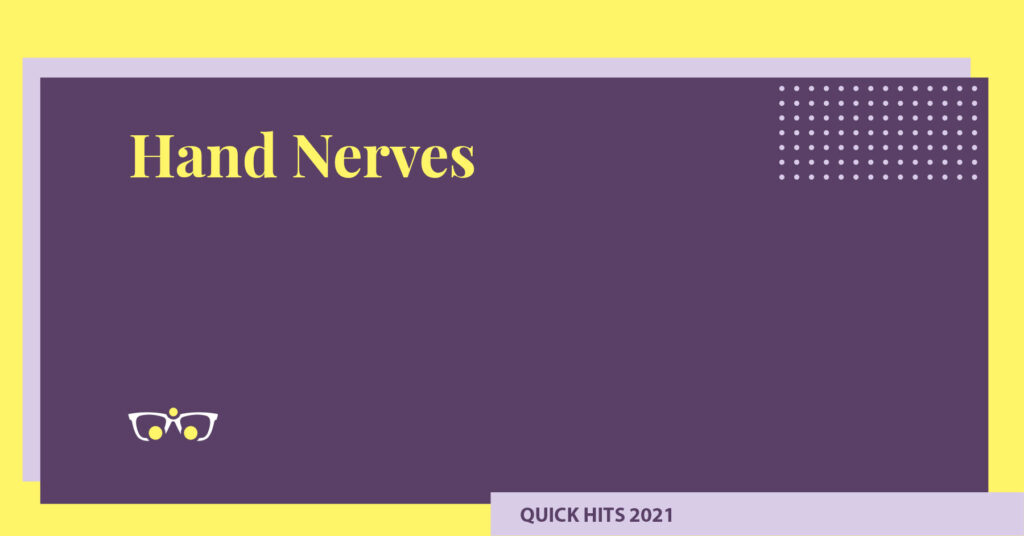Aging process:
- Skin changes: Epidermis and dermis thins, loss of sebum production, decrease in melanocytes, loss of dermal papillae and loss of dermal/epidermal junction
- Decrease in collagen and elastin, decrease in glycosaminoglycan, Langerhans cells, and keratinizing cells
- Type III collagen increases and type I decreases (causes fine wrinkles)
- Classic signs of facial aging are the loss of volume, or deflation of fat compartments of the face in conjunction with attenuation and laxity of the anatomical retaining ligaments of the face
- When the retaining ligaments become attenuated, it causes the appearance of skin laxity –> IE deepened folds (nasolabial fold, tear trough, jowl)
- Bony maxilla and infraorbital rim retrude
- Marrionette lines: deep creases from corner of mouth to chin
- Caused by volume deflation in combination with intact mandibular ligaments give rise to lines
- Obtuse cervicomental angle (>120 degrees) can result from loose, excess skin, low position of hyoid bone, excess preplatysmal or subplatysmal fat, retrodisplaced or small chin
Congenital causes of skin laxity and aging:
- Cutis laxa: an AD genetic disorder with variable inheritance and expressive patterns. Underlying defect is poor elastic tissues due to degeneration of elastic fibers
- Can still undergo elective plastic surgery
- Ehlers-Danlos syndrome: includes more than 10 types of inherited disorders. Clinical presentation includes skin laxity, hyperextensibility, excessive thinness of skin, joint hypermobility, and aortic aneurysms
- Wound healing is poor and elective procedures should not be performed
- Elastoderma: pendulous skin laxity initially involving the trunk and extremities that progress to involve the entire body
- Wound healing is unpredictable and elective surgery should not be performed
- Progeria: AR disorder of unknown cause- findings include premature aging, lax, excess skin, growth retardation, and cardiac disease
- Wound healing potential is poor, associated with premature death
- Werner Syndrome: AR characterized by pigmented, indurated, plaque-containing skin, osteoporosis, muscle atrophy, growth retardation, cardiovascular disease, and diabetes
- Poor wound healing and small vessel angiopathy are associated
Nonsurgical Treatment:
- Kybella or deoxycholic acid: used for obtuse cervicomental angle and preplatysmal fat –> works by disrupting adipocyte cell membranes
- Trentinoin: for fine rhytides. Mechanism includes increased epidermal and dermal layer thickness, elimination of dysplasia, atypia, and microscopic actinic keratoses, uniform dispersion of melanin granules, increased collagen and glycosaminoglycan deposition in papillary dermis, thinning of stratum corneum
- Inhibits AP-1 transcription factor
- Causes early side effects of erythema, photosensitivity, and desquamation
Anatomy:
- Aesthetic analysis of the face may be simplified by dividing the face into equal horizontal thirds and vertical fifths
- Upper third includes the forehead and brows, extending from the anterior hairline to the glabella and brows
- The middle third includes the midface, eyes, and nose and extends from the glabella to the subnasale
- Lower third includes the lower cheeks, jawline, and neck and extends from the subnasale to the menton
- Width of the face may be divided into equal fifths by lines dropped from lateral canthi and medial canthi
- Great auricular nerve: Great auricular supplies sensation to ear lobe, concha, posterior aurical
- Exits deep neck along the posterior border of the SCM and then travels parallel and posterior to the external jugular vein (1cm cranial) –> bifurcates into anterior and posterior branches
- McKinney’s point: location where the great auricular nerve crosses the mid transverse belly of the sternocleidomastoid muscle at a point 6.5cm below the caudal edge of the bony external auditory canal
- Most superficial location approximately one third the distance from the EAC to the clavicular origin of SCM
- Temporal branch of the facial nerve: just deep to the temporal parietal fascia
- Facial nerve (innervates mimetic muscles of the face) exits the stylomastoid foramen and the main trunk, pes anserinus can be found 1cm inferior and posterior midway between the tragal pointer and the posterior belly of the digastric muscle –> splits into 5 branches (temporal, zygomatic, buccal, marginal, cervical), all branches arborize except temporal and marginal mandibular
- Difference between cervical branch and marginal mandibular branch: both can cause lip depression weakness, but cervical branch injury patients would still be able to purse their lips as the mentalis and oribcularis oris is still intact, if marg is out: lip depression weakness and unable to evert the lower lip when pouting
- Marginal mandibular nerve: located deep to SMAS –> can travel as low as 1-2 cm below the mandible along its entire course
- Spinal accessory nerve (cranial nerve XI) injury- nerve innervates the SCM and trapezius muscles, exits the cranium through the jugular foramen –> passes deep to the styloid process and under the SCM –> exits posterior border of SCM within 2cm superior to great auricular nerve –> tightly sandwiched between skin and muscle fascia IE lateral neck
- Auriculotemporal nerve: innervates external auditory meatus, upper helix, and temporal scalp
- SMAS (superficial musculoaponeurotic system): superiorly to inferiorly, the superficial layer continuous with the SMAS consists of the galea, temporoparietal fascia, cheek SMAS, platysma, and superficial cervical fascia
- Deep fascial layer (deep to the SMAS) includes cranial periosteum, deep temporal fascia, parotidomasseteric fascia, and deep cervical fascia
- Deep temporal fascia splits into two layers which surround the superficial temporal fat pad and attach anteriorly and posteriorly on zygomatic arch –> continuous with anterior and posterior parotidomasseteric fascia respectively
Anesthesia:
- Intravenous sedation: may be used in facelifts; decreases risk for deep venous thrombosis. Can be associated with increased operative time
- Often infiltrate with tumescent solution for anesthesia and hemostasis control
- Complications include facial nerve weakness from residual effect of local. Can take several hours to wear off –> reasonable management of deficits includes observation (will be described as minimal edema and facial nerve weakness)
ASPS Taskforce Guidelines:
- Current recommendations suggest that procedures be limited to less than 6 hours and begin early in the AM
- Increase >4 hours surgery associated with postoperative nausea and vomiting. No increased risk of major complications
Browlift:
- Incisions/approaches:
- Endoscopic: does not address forehead length
- Can result in inadequate removal of glabellar muscles resulting in early recurrence of glabellar lines and frowning action
- Endotemporal: useful for patients with thin hair or lateral ptosis
- Pretrichial: appropriate for patients with a long forehead
- Transcoronal: most useful in a patient with a short forehead and deep rhytids
- Transpalpebral: does not address forehead length
Complications:
- Numbness of central forehead paresthesias: typically related to traction injury of the supraorbital nerve, a division of V1
Facelift
- General methods: 1) making an artfully placed incision which follows anatomic contours 2) skin elevation to allow access to the SMAS 3) tightening of the SMAS – through elevation, plication, imbrication etc 4) anchoring of SMAS 5) re-draping of soft tissues 6) careful skin closure with minimal tension on earlobe
- Tips and Techniques:
- Short scar rhytidectomy: (includes the minimal access cranial suspension technique)
- May need postauricular incision in patients with significant skin excess as an excess vertical fold of skin may result in the lateral neck
- High SMAS: divides SMAS transversely at the superior most portion of the zygomatic arch –> can be performed safely as the frontal branch of the faxcial nerve runs in close proximity to the periosteum of the zygmoatic arch
- Post-auricular incision should follow the hairline of the posterior scalp to allow excess skin to be removed without creating irregular and misplaced lines
- Including SMAS tightening: increases longevity of result (opinion, no conclusive evidence), decreases tension of skin closure, puts facial nerve at greater danger than skin only
- Use of fibrin glue have demonstrated decreased rate of ecchymosis, edema, seroma, and prolonged induration
- Secondary rhytidectomy: patients are typically older and have more comorbid diseases (depression, HTN)
- Less skin typically excised, SMAS is generally thinner, and vascular compromise LESS likely due to the delay phenomenon
Fat Grafting:
- In a patient with severe facial fat atrophy, only jowling/neck laxity can be improved with face-lift, one must also reverse signs of fat compartment atrophy to achieve facial rejuvenation
Complications
- Earlobe numbness: from great auricular nerve injury (from neuropraxia, suture entrapment, axonotmesis, or neurotmesis)
- Should repair if noticed injury during surgery
- Transient earlobe numbness common after facelift, majority should return in 6 months –> observe
- After 6 months consider re-exploration for anesthesia with allodynia
- Hematoma: can be a common early complication following facelift –> resorption of epinepherine in the early post op period can lead to rebound hypertension and subsequent hematoma (much higher in hypertensive patients)
- Patients should take blood pressure medicine in am, intraoperative and postoperative hypertensive control
- Presents as pain, firm swelling, and bruising within 6 hours
- Injury to the great auricular nerve (6%): to AVOID injury- raise platysma at the anterior border of the SCM; SMAS sutures should be placed posteriorly to McKinney’s point
- Frey’s syndrome: describes gustatory sweating after aberrant reinnervation of cutaneous sweat glands after disruption of auriculotemporal nerve branches (more likely after parotidectomy)
- Spinal accessory nerve (cranial nerve XI) injury- nerve innervates the SCM and trapezius muscles –> more likely to be injured with lateral neck dissection
- Observe until 3 months –> if no clinical recovery at this time should undergo evaluation by EMG/NCS –> followed by surgical exploration with neurolysis, repair or grafting
- Salivary leak: can occur from direct injury to the parotid gland –> typically self limiting
- Treatment includes minimizes salivary secretions: regular percutaneous drainage, temporary drain, compression, antihistamines, scopolamine patches, bland diet, and botox injections directly into the gland
- Marginal mandibular nerve injury: can result in inability to depress the affected side of the lower lip –> can be attributable to traction, cautery sutures or surgical division
- Spontaneous recovery noted usually in 3-4 months, should observe rather than obtain studies re-explore etc
- The abnormal side is the side that DOES NOT DEPRESS
- Treatment includes observation followed by botox injections after 6 months on contralateral side for symmetry
- Anatomic deformities
- Pixie ear deformity: results from excessive trimming of the flap adjacent to the base of the earlobe. May fix with VY or readvancement of facial flap
- Jokers lines – submalar hollowing
- Alopecia – caused by excessive traction
- Tragal blunting – also caused by excessive traction
- Wound healing issues: should initially be managed with local wound care –> can readvance and perform scar revision once wound has completely healed and skin laxity has returned
Miscellaneous
- Peels at the time of facelift: in general non-undermined skin can be safely peeled at the time of facelift, ie. “T-zone”
- Radiofrequency facial rejuvenation (ultrasonic waves, laser technology, cryolipolysis): uses high frequency, alternating electricity currents to alter biological tissues
- Causes collagen remodeling and neocollagenesis through a controlled wound-healing response
- Ultrasound: disrupt tissues with sonic vibrations
- Cryolipolysis: reduces subcutaneous fat without reducing other tissues
- Aging after facial allotransplantation: from reduction of bone and non-fat subcutaneous soft tissues







